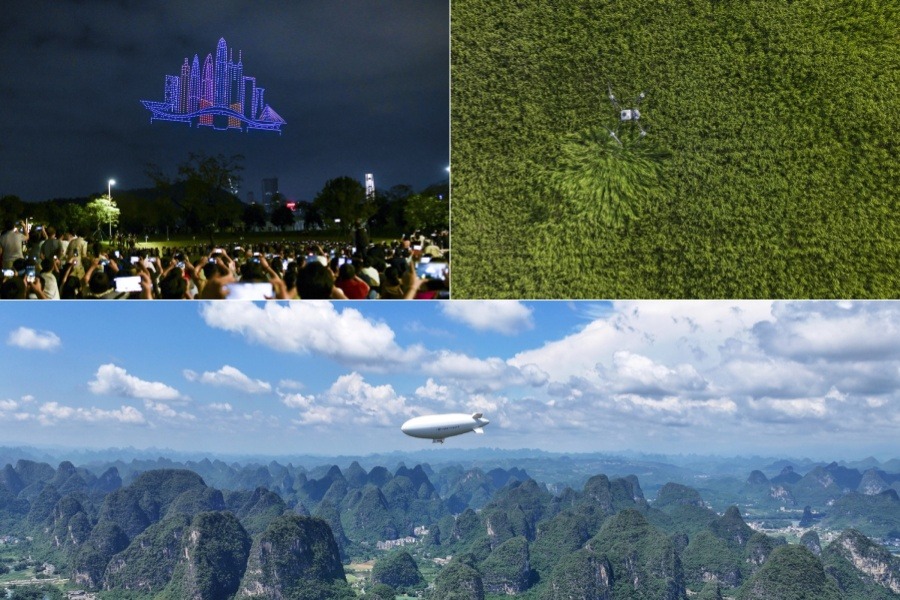China builds large commercial radar satellite constellation
Xinhua | Updated: 2024-12-24 08:48
BEIJING -- The large-scale application of a Chinese commercial radar remote sensing constellation composed of 12 satellites began on Monday, according to PIESAT, a Beijing-based satellite firm.
The announcement came after four PIESAT-2 satellites, which were launched into a 528-kilometer sun-synchronous orbit last week, were calibrated and successfully transmitted high-resolution images and data back to Earth.
The latest satellites joined another eight satellites that were previously deployed to space, creating China's largest commercial radar remote sensing constellation: Nuwa, which is named after the Chinese goddess known as a creator of humanity.
Nuwa's in-orbit satellites are arranged in three groups. The first group forms a wheel-like configuration, with a main satellite acting as a "hub," surrounded by three auxiliary satellites evenly distributed. The second and the third groups were launched over the last two months and are organized in four-satellite, co-orbital, wheel-like formations.
The constellation is now capable of offering global coverage, including coverage in polar and equatorial regions, and can see through clouds and rain, thereby enabling all-weather, constant Earth observation with an imaging resolution of up to 1 meter.
"The satellites provide instant-see remote sensing, with quick response and agile observation capabilities," said Wang Yuxiang, PIESAT's chairman. "They take as little as 20 minutes to transmit data from command to ground reception."
The interferometric synthetic aperture radar (SAR) technology installed in the satellites can capture two images of the same location by bouncing radar signals off the Earth's surface at different times. By causing the images to interfere with each other, they produce maps called interferograms, which reveal the ground-surface displacement between the two time periods.
It is expected that by 2025, the Nuwa constellation will have a network of at least 20 satellites to enable a daily revisit interval, with the fastest revisit time reduced to an hour.
The PIESAT team has also employed artificial intelligence (AI) technology to enhance image analysis efficiency, realizing the real-time monitoring of millimeter-scale deformations in objects like dams, landslides and drainage outlets.
In July this year, the four PIESAT satellites then in orbit provided radar images and data to support rescue efforts after a dike breach in Dongting Lake, China's second-largest freshwater lake.
Following the breach on July 5, the satellites carried out four rounds of high-frequency surveillance from July 7 to 11. "The radar satellites' capacity to function in adverse weather has ensured the capture of critical data at crucial moments," said Huang Jinhai, vice-president of PIESAT.
In the future, the Nuwa project aims to establish an interconnected platform with 114 satellites to form a bigger SAR hybrid constellation.
The current constellation can provide data and image support for flood disasters, water conservancy monitoring, construction safety, agricultural surveillance and ocean observation, Wang said.
























